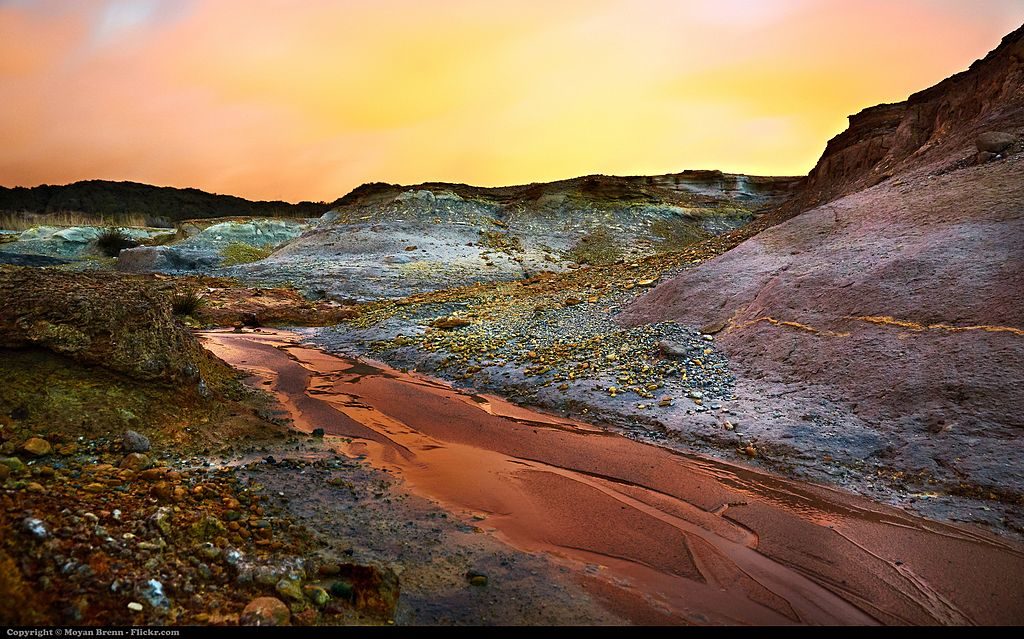Water is essential for life. When searching for life in the universe, the first thing researchers do is “follow the water”. Mars is no exception. Finding evidence of water on Mars could put scientists one step closer to finding out if there is or was life on the red planet.

Patterns on the surface of Mars similar to deltas on Earth caused by flowing water. Image By NASA/JPL/Malin Space Science Systems [Public domain], via Wikimedia Commons.
However, in order to have liquid water, some conditions are needed, like an average temperature above the freezing point 0°C or 273 K, approximately). On Earth, liquid water is possible due mainly to the temperature that our planet sustains. Unfortunately, Mars does not have the same climate conditions, due to its thin atmosphere and distance from the Sun. The thin atmosphere prevents the planet from having enough of one of the main natural process that helps Earth to keep warm: the greenhouse effect.

Image credit: Environmental Protection Agency – Public Domain – via Wikimedia Commons.
Scientists have made some climate models to explain how liquid water on Mars could be possible and, at the same time, explain the observation of these activities in the soil of Mars. Some hypotheses already raised by other researchers include the possibility that Mars was originally icy and occasionally heated by impacts or volcanic activity. Another hypothesis is that Mars was once heated due to the presence of gases that enabled the greenhouse effect. However, these theories cannot explain how the planet could have maintained the necessary temperature to have liquid water for the period needed to form the valleys and patterns observed. In addition, the Sun was approximately 25% less bright by the time most of the valleys were formed, which makes it even more difficult to warm the planet.
The new model proposed in this study suggests cycles of hot and cold periods, caused by the presence of carbon dioxide (CO2) and hydrogen gas (H2) in the atmosphere, which could increase the greenhouse effect in the necessary amount. Carbon dioxide alone wouldn’t be enough to cause the necessary warming of the surface. The larger amounts of hydrogen gas in the atmosphere would more efficiently absorb the “heat” of the Sun. The combination of the two gases would cause the surface temperature of Mars to become warm enough to have liquid water instead of ice.
Scientists say the hot and cold periods are due to the activity of volcanoes on Mars. They release carbon dioxide and hydrogen gas into the atmosphere, which then reacts with rocks on the ground to form minerals known as silicates. When the planet is in its icy period, the amount of CO2 released in the atmosphere by the volcanoes is higher than what is converted into silicates. So, the amount of carbon dioxide in the atmosphere increases, helping to produce a thicker atmosphere and, consequently, warming up the planet. With the heating of the planet, the ice is melted, turning into liquid water.
Incidentally, the increasing heat helps the silicates to rapidly consume the carbon dioxide, so the amount of CO2 in the atmosphere starts to decrease, even with the volcano’s activity. As the CO2 in the atmosphere drops, the planet starts to get colder and the liquid water turns into ice again and the cycle repeats. The valleys observed would have formed a little more each time the planet warms.
Discovering the origin of the formation of these valleys can help answer questions about the early conditions on Mars. Future missions will seek to determine how long ago these valleys formed by analyzing the soil. Perhaps we will be closer answering whether or not life is or was possible on the planet.


